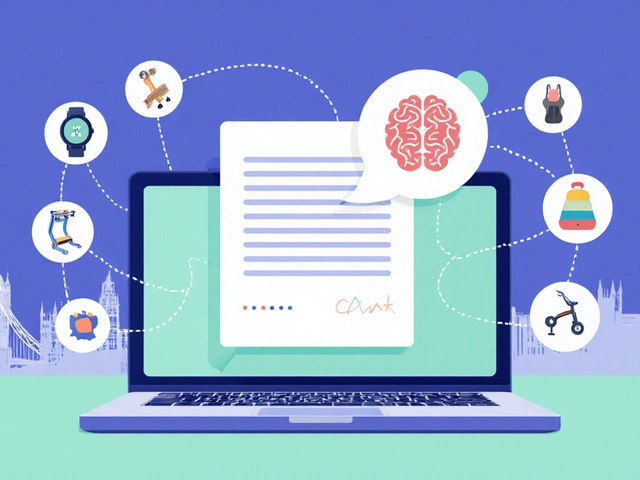If you’ve ever found yourself doomscrolling through endless news feeds, you’ve probably seen claims and counterclaims flying everywhere—some of them clearly fishy, some sneakily persuasive. The internet doesn’t just make information spread fast, it’s made propaganda mutate and evolve into something a lot more slippery. Now, right in the thick of it, artificial intelligence tools like ChatGPT have stepped up, not just as passive bystanders but as key players in untangling the web of misinformation. Propaganda isn’t new, but its tricks and disguises sure have gotten an upgrade—and so have the ways we fight back. So, how exactly did ChatGPT end up in the spotlight, and what does it mean for anyone who cares about the truth online?
Why Propaganda Analysis Needed a Shakeup
Old-school propaganda—the kind that relied on posters, radio addresses, and official-looking pamphlets—was easy to spot half the time, if you knew what to look for. But when information moved online, the propaganda game changed. Suddenly, armies of bots, troll farms, and coordinated inauthentic accounts could pump out hundreds of pieces of content every minute, blending half-truths, viral memes, and doctored images in ways that felt impossible to untangle. A Stanford study from 2020 flagged over 130 coordinated campaigns in just a year—most of them escaped detection by both social media moderators and unaided human eyes.
The speed and complexity overwhelmed human analysts, so people tried automated fact-checking and language analysis tools. They struggled, partly because propaganda is crafty—it relies on emotional hooks, context, and subtle distortions that rule-based programming kept missing. Enter ChatGPT and systems like it. They don’t just read for facts; they process context, tone, intent, and even the sneaky signals of manipulation in massive volumes of text. Suddenly, tracking the tide became less about catch-up and more about actually seeing the whole game board.
One thing that matters? Scale. In 2023, experts estimated X (formerly Twitter) saw over 500 million tweets per day. Even the largest moderation teams couldn’t come close. But with ChatGPT, you’re looking at something that can scan, flag, and piece together relationships way faster, and with deeper pattern recognition. It’s not just about keyword alerts or obvious fake news—today’s propaganda leans on micro-influencers, memes, and carefully crafted language, hiding the intent under layers of irony and relatability. Suddenly, humans aren’t outmatched by volume—the machines are on our side.
Still, there’s a catch: propaganda comes from all kinds of sources. It’s sometimes coordinated, sometimes just amplified by regular users (even your old college friend resharing a wild rumor). So the task isn’t just about rooting out the source—it’s seeing patterns, understanding intent, and flagging problematic trends before they tip over into actual harm. That’s where the new generation of AI steps up, sorting signal from overwhelming noise.
| Year | Detected Propaganda Campaigns (Global) | AI Used in Detection (%) |
|---|---|---|
| 2020 | 130 | 21 |
| 2022 | 177 | 38 |
| 2024 | 225 | 62 |
That jump in AI-powered detection tells the story. Just a few years ago, human analysts were fighting a losing battle. Now, with tools like ChatGPT added to their arsenal, analysts are getting a real shot at understanding both the roots and reach of digital propaganda.

How ChatGPT Dissects Modern Propaganda
The magic behind ChatGPT in propaganda analysis lies in its ability to understand not just what’s being said, but how, why, and to whom. Take for example, a recent event where a sudden flood of seemingly unrelated posts all started echoing the same talking points about a political issue in South America. Human moderators might catch the trend eventually, but ChatGPT flagged the common linguistic style and coordinated timing within hours. It even mapped the spread to a batch of recently created accounts—exactly how seasoned propagandists try to fly under the radar.
What’s happening under the hood? The AI looks for not just repeated keywords or links, but rhetorical patterns, logical fallacies, misleading emotional appeals, and common structures in how arguments are made. So, if a series of posts all claim “Everyone is saying X…” followed by emotional rhetoric, it spots the formula. It recognizes when posts are crafted to spark outrage and when they use subtle framing like loaded questions or selective statistics.
This works because ChatGPT has been trained on an impossibly huge data set, so it recognizes not just obvious lies, but the evolution of propaganda tricks through history. It can flag dog whistles, emotionally charged stories, or even seemingly harmless memes that later evolve into something more harmful. In 2024, a wave of viral memes spreading misinformation about a vaccine side-effect was quickly identified—not because of the wording, but because of identical patterns in meme structure and account activity. Human analysts then stepped in, using those insights to advise media outlets on counter-narratives and context before things spun out of control.
Of course, there are drawbacks. AI doesn’t always get sarcasm right—someone joking about a conspiracy theory can be mistaken for spreading it. There’s also the risk of over-policing, where genuine debate or satire gets swept up in the filter. But developers learned fast. Modern iterations let humans review, tweak parameters, and even train the AI on known cases so it grows more nuanced, not just more powerful. The best setups use a blend—machine for speed, humans for judgment, context, and common sense. It’s a feedback loop. AI surfaces the suspicious stuff; human eyes make the call:
- Is this user acting alone, or is there a bot network pushing the message?
- Is the emotional tone unusually high, out of step with the ordinary conversation?
- Are accounts interacting in patterns (time zones, sudden activity spikes, identical hashtags) that hint at coordination?
The goal isn’t guessing, it’s pattern recognition and alerting. And every case analyzed makes the AI a little sharper for the next round. What used to take a whole week—pulling word clouds, charting sentiment, mapping account clusters—can now take basically an afternoon, if not less.
Tip for digital sleuths at home: pay attention when you see clusters of new accounts or a suspiciously similar template in several viral posts. If you’re technical, there’s a growing pool of open-source AI tools you can use to spot these trends yourself, not just wait for the platforms to catch up. The arms race with propaganda will keep accelerating, but AI like ChatGPT makes the balance a little less lopsided.

Where AI-Powered Propaganda Analysis Goes Next
The wildest part? We’re still just scratching the surface with how ChatGPT and kindred AIs will shape the next phase of propaganda wars. Already, smart analysts use AI-generated reports to brief journalists, policymakers, and public health officials—in some European elections last spring, ChatGPT-powered tools flagged fake endorsements and deepfake videos before they went viral. That’s a huge change from past years, when by the time a manipulation was exposed, the damage was mostly done.
I chatted with a cyber security friend who runs a nonprofit, and she told me the biggest win isn’t just quicker detection—but education. The reports generated by AI are now being used to help the public recognize propaganda for themselves. Imagine opening your news app and being told, “Hey, this trend emerged from just 15 accounts in the past hour, all registered in the same city—proceed with caution.” Suddenly, the average person isn’t stumbling around blindfolded in the info jungle.
There’s a debate about transparency, though. How much should we reveal about what the AI sees or flags? Too little, and the public won’t trust it. Too much, and bad actors learn to game the system. Even so, the trajectory is obvious: the next generation of users will grow up knowing AI tools as their first line of defense against manipulation, the way everyone learned about antivirus and firewalls back in the day.
And here’s a fun fact: by late 2025, over 90% of online moderation teams at the major social networks will be using some form of AI-driven pattern recognition, with ChatGPT as the engine or at least the influence. More interesting, smaller startups and NGOs are now accessing stripped-down versions for regional and niche misinformation—meaning, it’s not just the tech giants holding the keys. My partner, Oliver, works in public relations and even his team uses AI scripts powered by ChatGPT to run quick scans on trending narratives before preparing a response for a big client. The playing field is leveling, bit by bit.
For anyone worried about misuse, yes, that risk is real. Bad actors have started testing AI for spreading misinformation in return, even using text generators to mimic authentic outrage or support. That’s why there’s a parallel track of specialists who train detection AIs specifically to spot content likely generated by other AIs—a bit of a cat and mouse game. But the good news? These tools are open to regular people and watchdog organizations, not just governments and platforms. That keeps accountability alive and well.
If you’re interested in trying this out yourself, lots of browser extensions and public dashboards now use ChatGPT to flag suspicious trends as you scroll. You can report suspicious accounts with more context and help analysts improve their models with your feedback. The result: every voice counts, and every click helps keep the information ecosystem a little healthier.
One last thing—propaganda’s not going away, but now the tools for fighting it are in the hands of anyone who wants to understand what’s really going on behind the headlines. It’s messy, it’s fast-changing, but for the first time, the odds are starting to look a little less daunting.





